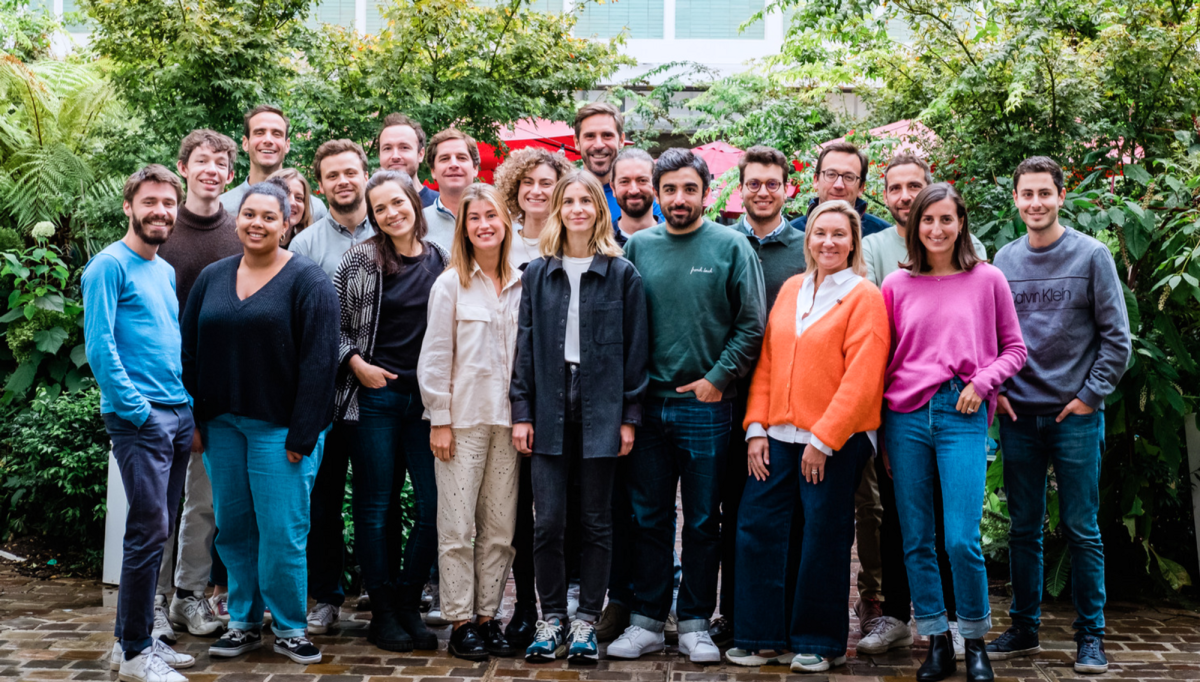eFounders morphs into Hexa, a portfolio company of startup studios
Over the past 11 years, eFounders has refined the startup studio model in Europe. The company has contributed to the launch of more than 30 different startups, including three unicorns — Spendesk, Aircall and Front.
While things seem to be doing well for the startup studio, eFounders is pivoting — sort of. As of today, eFounders is becoming Hexa, a holding company for different startup studios.
You could have seen this change coming as eFounders hasn’t been just eFounders for a while. In addition to its initial studio focused on the future of work, eFounders has already launched two new studios — Logic Founders for fintech startups and 3founders for web3 startups.
Hexa is going to run three different studios — Logic Founders, 3founders and, yes, eFounders. So what is happening with eFounders then?
“I started writing a LinkedIn article saying that it is the last time I’m writing as the founder of eFounders,” eFounders co-founder Thibaud Elzière told me. But he is not going anywhere as the eFounders core team is simply going to work for Hexa now.
Just like with Hexa’s other studios, there is a dedicated eFounders team with a head of studio as well as a core team of product people. Matthieu Vaxelaire is now at the helm of eFounders.
Combined, Hexa companies have hired 3,000 people and have reached a total valuation of $5 billion. And Hexa isn’t going to change its formula going forward. Hexa’s startup studios match an idea with a founding team.
The studio team then provides resources and help to launch a product. After raising some funding, startups gain their independence and the startup studio can move on and focus on new projects.
“We reached a limit when it comes to scalability. It’s a virtuous model but it’s also very much handcrafted work,” Elzière told me. In addition to supporting Hexa’s existing studios, the company wants to launch studios around new verticals, such as climate, education and health.
But it will depend on heads of studio that they meet and end up hiring. Hexa aims to launch two new studios next year.
“It’s a crazy bet for us. We are creating a brand from scratch. And we are doing that because eFounders is a strong brand when it comes to SaaS startups, but also because eFounders was outshining other studios,” Elzière said.
A 30% stake
“What we are doing with Hexa is that we are democratizing team entrepreneurship. We offer an alternative to traditional entrepreneurship” Elzière said. “Like a lot of things in life, when you work as a team, it works better.”
But that doesn’t mean that Hexa and its startup studios are launching new startups for fun. They are taking a significant stake in each new startup.
“We want to launch more startups. But it costs us around €800,000 to launch a company. We can either invest some money ourselves, or we could create a small fund like Y Combinator. Investors could contribute and they would end up on the cap table.”
When Hexa’s startup studios launch a new startup, they try to keep a 30% stake in the company after raising a seed round. With third-party investors, Hexa could lower its stake to something like 25%, and investors would get 5%.
Hexa’s own stake would be split between Hexa and each startup studio. “You would have 5 to 10% that would be allocated to the head of studio and their team,” Elzière said. The bottom line is that Hexa and its partners would still take a 30% stake. Then it would be split between multiple partners.
“That deal might seem a bit unfair,” Elzière said. But he thinks eFounders’ track record speaks for itself. With roughly 3 unicorns out of 30 portfolio companies, entrepreneurs are more likely to create a unicorn with the help of eFounders than without. Essentially, founders can potentially get a smaller portion of a bigger cake.
The life and death of startup studios
But where does Hexa come from exactly? It comes from the hexadecimal numbering system. In particular, hexadecimals are used to represent binary digits (0 and 1) in computing programming. Each hexadecimal character represents a succession of four binary digits.
“For me, it’s the simplest expression of the human-machine interface,” Elzière said. As a bonus, hexadecimal characters are also used by designers for color codes.
He believes that startup studios will work just like startups. Some of them will thrive, others will fail. “Studios will have a certain lifespan. At some point, they’ll run out of steam because the head of studio won’t be there anymore or there won’t be any opportunity left,” Elzière said. As always, we will judge the quality of Hexa’s work by the new startups that emerge from those studios.




